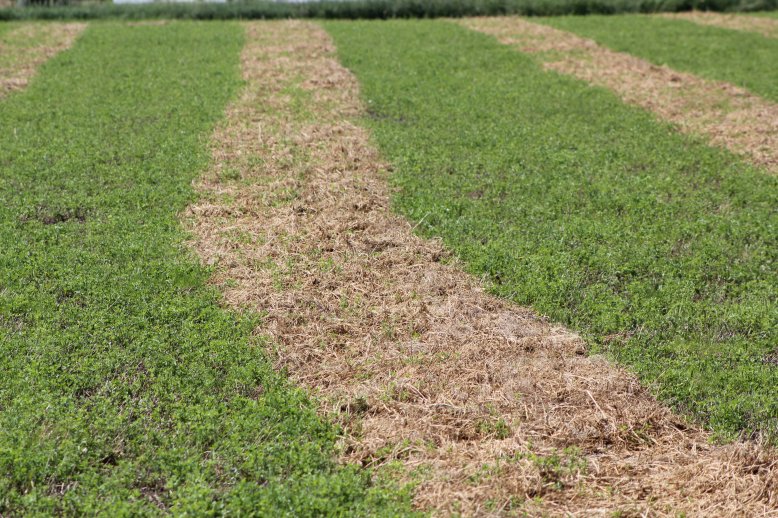
By Bruce Anderson, UNL Forage Specialist
Rained on hay. Sometimes it’s down so long that it’s virtually worthless. Trouble is, what do you do with it?
Rained on hay causes many problems. Obviously, feed value of the hay is lowered. And many times, in our rush to put this hay up, it gets baled or stacked too wet, which causes mold or heat damage to develop.
Sometimes a bigger problem, though, is the long-term damage to the regrowing plants. Driving over the field repeatedly — trying to turn hay to hasten its drying — will injure regrowth and can cause soil compaction, especially if the ground is wet and soft.
But, not driving on the field may result in an even bigger problem with the windrows. If they lay there too long, the plants underneath will be smothered. This not only lowers yield, it creates a terrible weed problem as grasses and broadleaves infest the killed strips. These weeds will contaminate all future cuttings. In addition, if rained on hay windrows are left in the field until next cutting, they frequently will plug your mower, both slowing you down and maybe even expanding your vocabulary. Not to mention the reduced quality of this new hay.
So — remove that hay any way you can. Bale it, chop it, even blow it back on the ground as mulch. You may need to damage plants by driving on them to turn hay to speed drying and get sunlight to plants underneath. But do it anyway to prevent old windrows from ruining the rest of your haying year.
Then, watch for problems in the damaged strips. Insects and weeds may invade, and then need treating to prevent further problems.
There isn’t much of a positive payback managing rained on hay, but to ignore it is even more expensive.